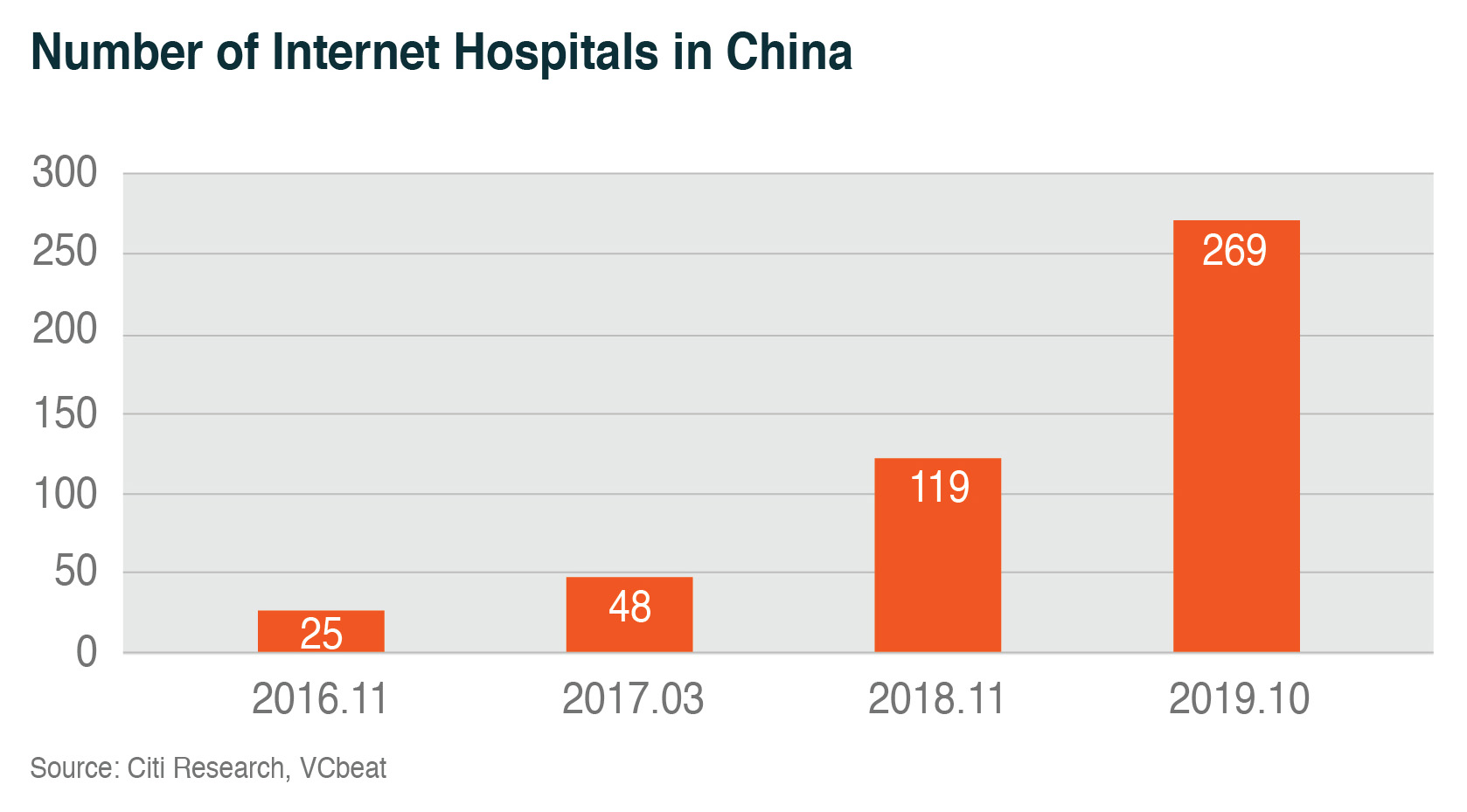The Rise of Telemedicine: Embracing a New Normalcy
The pandemic has accelerated trends and generated new investment opportunities. Telemedicine is a paradigm.
Telemedicine is the use of modern telecommunications technology that enables a patient to reach medical consultation through an app using artificial intelligence. The process involves a symptom brief then in real-time exchanging the information with a live doctor where diagnosis and recommendation are approved with professional feedback. This new technology integrates with a one-stop-shop where the patient’s prescription is registered, and medication is then delivered to the patient’s door. All of this is achievable within the comfort of one’s home.
Overcoming Healthcare System Challenges
Over the past decade, the healthcare systems in Asian countries have faced fundamental structural issues, including demand-supply imbalances of medical resources, low compensation, and lack of job satisfaction for many medical practitioners in comparison with other major economies.
The increasing popularity of online medical services platforms could remediate the situation of our healthcare system. Telemedicine could:
- Divert less severely ill patients away from tier-one hospitals where resources are tight, by applying a multi-tiered medical system.
- Save public insurance expenses and ease the problem of medication overload.
- Provide other sources of income for medical practitioners.
Digital Healthcare Transformation
Online medical consultation platforms have attracted more users during the COVID-19 crisis. We believe this is a perfect storm to shift offline consumer behavior to an online platform. To facilitate physical isolation and reduce cross-infection, the Chinese government has further supported its adoption, encouraging the utilization of online healthcare services.
We have seen unprecedented demands for telehealth in the wake of the rise of online solutions in healthcare services. For example, China’s largest healthcare platform, Ping An Good Doctor, from late-Jan 2020 to early-Feb 2020, witnessed:
- 1.11 billion accumulated visits on the platform*
- 10 times the number of accumulated new registered users*
- 9 times the daily consultations by newly registered users on App*
Chinese Government Support
Earlier in April 2020, the NDRC (National Development and Reform Commission), in conjunction with the Cyberspace Administration, issued a document proposing the development of new digital industries “Internet Plus Healthcare.”
The promotion adopts medical insurance services during the prevention and control of COVID-19, supporting the reimbursement of qualified online medical consultations services of common diseases, chronic diseases, and the e-prescription filings for re-visit patients. The guidance urges cooperation between the Provincial Healthcare Security Administration and internet hospitals on the direct online settlement by medical insurance.
Some pilot cities, such as Yinchuan, Guizhou, and Inner Mongolia, have already started promoting internet-related treatments alongside price guidance. More provinces are now joining the bandwagon. The reimbursement rate for online diagnosis lies in the range of RMB6-50 per consultation.
To further promote telehealth, Fuzhou’s Municipal Health Commission signed a new agreement with Ping An Good Doctor in October 2019, establishing a centralized internet hospital platform. It was made compulsory for all bricks-and-mortar hospitals in Fuzhou to join.
With an accelerated application on country and city level, we have seen an increase in the usage of online hospitals over the past few months.
In addition to China, digital health platforms in other Asian countries such as Indonesia and India are reporting a surge in activities, too.
Telemedicine Ramps Up in Indonesia
The three most significant digital health platforms in Indonesia, including Alodokter, Halodoc, and GrabHealth (a joint venture between Singapore-based ride-hailer Grab and a Chinese healthcare company), have seen their usage skyrocket in March 2020. Alodokter clocked 32 million website visits in March and over 500,000 free coronavirus consultations since Indonesia’s first confirmed case on March 2, according to Alodokter Chief Executive Nathanael Faibis. In April 2020, Grabhealth said daily consultations had nearly doubled to 10,000.
To fight against COVID-19, Indonesia’s local government and authorities are actively promoting telehealth services. For example, the Indonesian Government COVID-19 task force announced on March 27 that twenty digital health services platforms would be added to its website, supporting the applications of telehealth services. A digital call centre will be established to direct the traffics of requests. On province-level, 49 million residents in West Java could enjoy the digital health care services, registering for COVID-19 testing through the online platform.
India – Telehealth Becomes a Reality
India formally commenced telemedicine recently. The regulatory body NITI Aayog issued Telemedicine Practice Guidelines on March 25, 2020, enabling Registered Medical Practitioners (RMPs) to provide healthcare remotely.
As the launch is still at an early stage, the regulation only allows registered medical practitioners to provide healthcare remotely via telemedicine. Albeit new technologies such as AI, IoT, data analytic based decision support systems, etc. could support RMPs on patient consultation, diagnosis, or management, the final prescription or counseling has to be directly delivered by the RMP.
The post-COVID New Normal
Even though the business may face challenges in the post-COVID world, they may also bring into being new normalcy. We believe that telemedicine has the potential to be the new norm of the fast-changing medical landscape.


